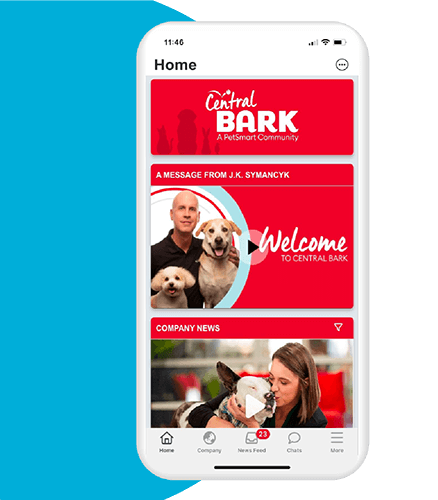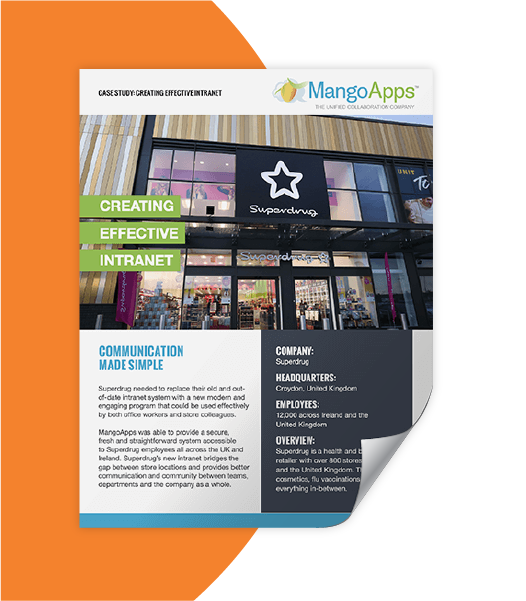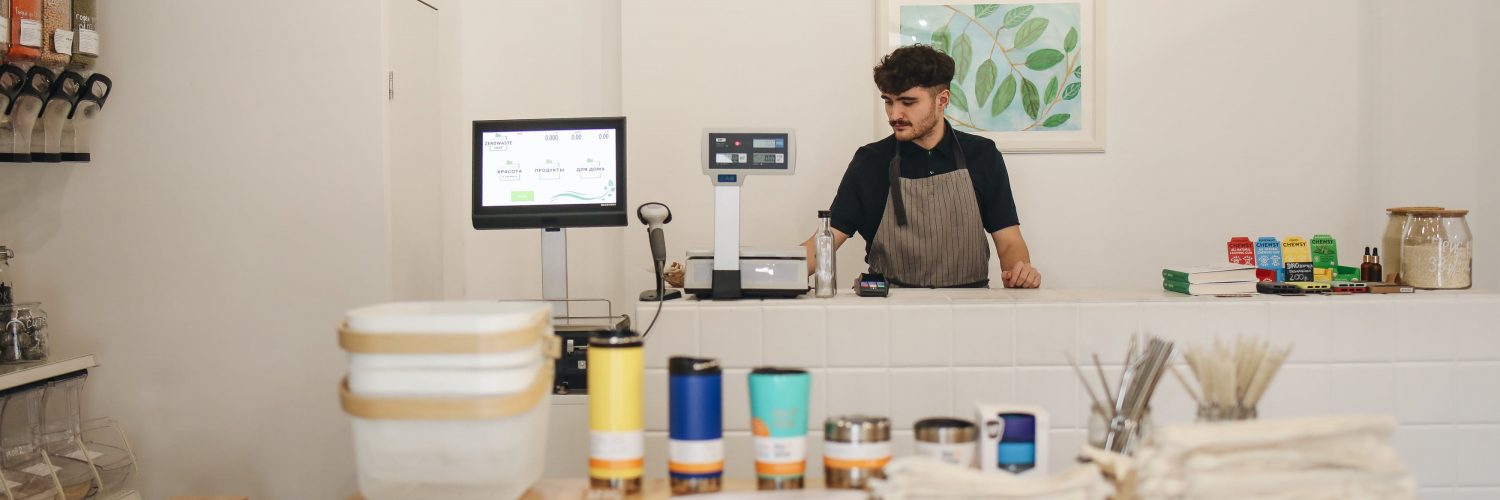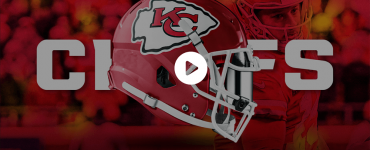Navigating the complex world of retail turnover can appear as a daunting task. With so many variables at play, it can be difficult to discern where the real issues lie. However, understanding the intricacies of retail turnover and how to effectively address them is integral to ensuring the smooth functioning and ultimate success of your business.
In the ever-evolving retail industry, turnover is a constant. It’s a complex issue woven intricately into the fabric of retail operations, from the sales floor to the executive suite. While it’s natural for employees to come and go, an unusually high turnover rate can signal underlying issues that need to be addressed.
The first step to effectively navigating retail turnover is understanding its causes and effects. It’s about recognizing the signs, whether it’s low employee morale, decreased productivity, or a decline in customer satisfaction. Once these signs are identified, it’s about taking proactive steps to address the issues, whether through improved employee training programs, better management techniques, or more effective hiring practices. An employee app for retail, like MangoApps, can help you identify these signs and take proactive steps to fix the underlying problems.
As you navigate through this guide, we hope to shed some light on the complexities surrounding retail turnover, offering you a clear path towards understanding and addressing your unique challenges. This comprehensive guide contains the necessary tools and insights to effectively manage and reduce retail turnover.
The Reality of Retail Turnover
Retail turnover is a reality that businesses have to grapple with on a daily basis. Despite its ubiquitous nature, it continues to be an area that is often misunderstood or overlooked, leading to significant consequences that could hinder the growth and success of your retail business.
Turnover, in simple terms, refers to the number of employees who leave your organization and are subsequently replaced. In the retail industry, this happens at a much faster pace due to various factors. These include the traditionally lower wages, the often physically demanding nature of the job, and the irregular and sometimes seasonal hours that come with working in retail.
High retail turnover rates can lead to substantial costs. These are not only financial but can also take the form of lost knowledge and skills when experienced employees leave. Additionally, high turnover can have a detrimental impact on team morale and productivity, as constant personnel changes can lead to instability and uncertainty within the team.
However, it’s not all doom and gloom. Understanding the reality of retail turnover is the first step towards effectively managing it. Identifying the reasons behind high turnover and implementing targeted strategies can help reduce its impact. These strategies could include investing in employee development, improving work conditions, offering competitive compensation, and cultivating a positive work culture.
In the following sections, we will delve deeper into the causes and effects of retail turnover, the cost implications, and the strategies you can employ to mitigate its impact. We hope this article will serve as a valuable resource to manage retail turnover and steer your business towards success.

PetSmart Case Study
Learn how PetSmart has achieved 4x the industry standard for employee engagement with a mobile-first platform built on MangoApps.
The Ripple Effect of High Turnover
High retail turnover doesn’t just impact the bottom line; it creates a ripple effect that can influence many different aspects of your business. Understanding this ripple effect is crucial to mitigating the impact of high turnover.
Impact on Employees
High turnover rates can foster a sense of instability among your remaining staff, leading to lowered morale and reduced productivity. The constant influx of new employees can be unsettling for existing staff members, impacting their job satisfaction and performance. There’s also the added pressure and workload on existing employees when they have to cover for vacant positions or train new hires.
Impact on Customer Service
In the retail industry, customer service is paramount. An experienced employee understands the products, services, and company policies and can provide superior customer service. However, when turnover is high, customers may find themselves interacting with inexperienced staff, potentially leading to decreased customer satisfaction and loyalty.
Financial Impact
The cost of replacing an employee can be high. These costs include recruitment, training, and the loss of productivity during the transition period. Furthermore, as experienced employees leave, the company loses the investment made in their training and development.
Impact on Company Reputation
Frequent employee turnover can negatively impact your company’s reputation. Job seekers might perceive high turnover as a sign of a poor working environment or lack of growth opportunities, which can deter talented individuals from applying.
To mitigate the ripple effect of high turnover, it’s crucial to develop effective strategies for both attracting new hires and retaining existing employees. By investing in employee satisfaction and development, you can create a more stable workforce, improve customer service, reduce costs, and strengthen your company’s reputation. The following sections will explore these strategies in more detail.
Strategies to Mitigate Turnover
In the face of high retail turnover, it’s essential to adopt a proactive stance. It’s not about merely reacting to turnover once it’s occurred. The key to a thriving retail business lies in implementing strategies that prevent high turnover in the first place. In this section, we’ll delve into a variety of strategies designed to not only attract top talent but keep them satisfied and engaged long-term.
Investing in Employee Development
Investing in your employees’ growth and development can be a game-changer when it comes to reducing retail turnover. Employee development involves providing opportunities for professional growth, such as training programs, workshops, seminars, or mentoring.
Training Programs
Structured training programs offer employees the skills they need to excel in their roles. These programs can range from onboarding for new hires, which equips them with the knowledge and skills required for their specific job, to ongoing training for existing employees, which keeps their skills up-to-date and introduces them to new sales strategies or technologies. Well-implemented training programs can boost employee confidence and productivity, leading to increased job satisfaction and lower turnover rates.
Workshops and Seminars
Hosting regular workshops and seminars can provide employees with a deeper understanding of the retail industry. They offer insights into market trends, customer behaviors, or innovative retail strategies. These learning opportunities can be internal (conducted by a senior employee or manager) or external (led by industry experts). They also serve to remind employees that they are part of a dynamic and evolving industry, which can boost motivation and job satisfaction.
Mentoring Programs
Mentoring programs, where seasoned employees mentor newer ones, can be a powerful tool in reducing turnover. This one-on-one relationship can offer the mentee valuable insights, advice, and support, helping them navigate the challenges of their role. It can also instill a sense of belonging and fosters a culture of learning and support within the organization.
Career Advancement Opportunities
Providing clear pathways for career advancement within your organization can also help reduce turnover. Employees who can envision a future at your company are more likely to stay. Regular performance reviews, promotions, and raises can all contribute to an employee’s feeling of progress and recognition.
Investing in employee development equips your staff with the skills they need to succeed and signals that you value and believe in them. This can lead to increased loyalty, job satisfaction, and ultimately, a reduction in retail turnover.
Enhancing Work Conditions
Enhanced working conditions play a significant role in employee retention rates. A comfortable and safe working environment can boost employee satisfaction, productivity, and overall morale.
Physical Conditions
Physical conditions of the workplace, such as lighting, temperature, and noise levels, significantly impact employees’ comfort and productivity. A well-lit store, for example, can reduce eye strain, improve mood, and enhance the overall shopping experience.
Similarly, maintaining an optimal temperature in the store can improve comfort for both employees and customers. Noise levels should also be monitored and controlled to ensure a pleasant shopping and working atmosphere. Regular assessments and improvements of these physical conditions can go a long way in reducing retail turnover.
Safety Measures
Safety in the workplace is another crucial aspect of working conditions. Retail businesses should prioritize safety training, ensuring that all employees know how to handle emergency situations. This might include training on how to use fire extinguishers or how to handle a robbery or medical emergency.
Additionally, regular safety drills can help to ensure that employees are prepared for unexpected situations. Providing a safe working environment goes beyond legal compliance—it demonstrates to employees that their safety is a priority.
Employee Facilities
Having well-equipped and clean employee facilities like break rooms, kitchens, and restrooms can show employees that their comfort and well-being are important to the company.
These areas should be kept clean, well-stocked, and should have facilities like microwaves, refrigerators, and comfortable seating. A well-maintained break room can provide employees with a space to relax and recharge during their breaks, leading to increased job satisfaction and productivity.
Work Schedules
In retail, employees often have to work during weekends, holidays, or in shifts. While this is part of the job, retail businesses can still make efforts to create fair and flexible work schedules. Using scheduling software that considers employee preferences, rotating weekend shifts, or offering compensatory off days can make scheduling fairer and more flexible. When employees are satisfied with their work schedules, they’re more likely to stay with the company.
Enhancing work conditions signals to employees that you value their comfort, safety, and well-being. These improvements, while seemingly small, can have a massive impact on employee satisfaction and in reducing retail turnover. It’s an investment that not only benefits your employees but also contributes to a better shopping experience for your customers.

Superdrug Case Study
Learn how Superdrug uses MangoApps to create a unified employee experience for its 12,000+ retail employees across 800 store locations.
Offering Competitive Compensation
In the retail industry, offering competitive compensation is a crucial strategy to reduce turnover, especially for frontline hourly employees. While retail businesses often operate on thin margins, it’s important to understand that your staff is your most valuable asset.
Fair Pay
Ensure that employees are paid fairly for their work. Competitively set hourly wages demonstrate to your employees that you value their time and effort. This not only helps to retain current employees but also serves as an attractive incentive for potential hires. Additionally, regularly review and adjust wages in line with inflation and cost of living. This can further enhance your standing as a fair employer.
Benefits
Although benefits may not traditionally be associated with hourly retail positions, they can make a significant difference in employee satisfaction and loyalty. Consider providing benefits such as health insurance, paid time off, or employee discounts. These additional perks reflect a commitment to your retail employees’ well-being. Furthermore, they can significantly impact your ability to attract and retain top talent.
Incentives
Introducing incentive schemes such as performance bonuses or sales commissions can motivate employees and drive productivity. These incentives not only reward hard work but also create a more dynamic and engaging work environment.
Offering competitive compensation, benefits, and incentives is as important for frontline staff as anyone else. Retail organizations who invest in their employees have a much easier time recruiting top talent and keeping them around in the longer term. This ultimately improves customer experience and the bottom line.
Cultivating a Positive Work Culture
A positive work culture in retail plays an integral role in curbing retail turnover. It’s about fostering an environment that values collaboration, respect, and open communication, thereby heightening employee satisfaction and productivity.
Leadership Style
The leadership style within a retail business greatly influences its work culture. A participative leadership style, which encourages employee input in decision-making, can generate a sense of inclusion and value in employees. By fostering a feeling of ownership and involvement in the company’s operations, retail businesses can boost team morale and motivation, thereby reducing retail turnover.
Open Communication
Maintaining open lines of communication is key in creating a positive work culture. Regular check-ins, feedback sessions, and open-door policies can foster an environment where employees feel heard and appreciated. These communication avenues also allow for the recognition of achievements and the addressing of concerns, enhancing job satisfaction and team cohesion. For more, see our checklist of common retail communication problems.
Team Building Activities
Team building activities can help to cultivate a sense of camaraderie and unity among retail employees. These activities can range from team outings and holiday parties to team-based trainings and workshops. Building strong interpersonal relationships among employees can result in a more collaborative and enjoyable work environment. A more positive environment contributes to the reduction of retail turnover.
Recognition and Rewards
Developing a system for recognizing and rewarding employee efforts can go a long way in boosting morale and job satisfaction. Recognition can be as simple as a verbal “thank you” or as formal as an Employee of the Month program. It’s important to acknowledge the hard work and dedication of employees. Doing so can encourage them to continue to excel and can foster a sense of loyalty towards the company.
Work-Life Balance
In the fast-paced retail industry, it’s important to promote a healthy work-life balance. Offering flexible work hours, remote work options, or generous leave policies can greatly enhance employee well-being and job satisfaction. These practices show that the company values the personal lives and well-being of its employees, which can boost loyalty and reduce retail turnover.
By implementing these strategies, you can effectively manage and reduce retail turnover, ultimately leading to improved employee satisfaction, better customer service, and increased profitability. It’s important to remember that there’s no one-size-fits-all solution; the key is to identify and address the specific issues that contribute to high turnover in your retail business. For more onthis, see our strategies for reducing burnout.
Leveraging Technology as a Support Tool
Modern technology plays a pivotal role in managing and reducing retail turnover by providing tools that enable retailers to understand, predict, and respond to turnover trends. With the right technology, retail businesses can transform their approach to turnover, replacing guesswork with data-driven strategies.
Employee Apps
In today’s digital age, an employee app like MangoApps can serve as a central hub for information, communication, and engagement. These apps can simplify onboarding processes, ensuring that new hires are equipped with the necessary knowledge and resources from day one. Through such apps, employees can stay updated on company news, access work schedules, and even receive training. This immediate and convenient access to information can increase their engagement, enhance their job satisfaction, and thereby reduce retail turnover as well as time and cost of onboarding.
Furthermore, these apps can also provide valuable insights into employee sentiments. By integrating features such as surveys or feedback options, retail businesses can gain a deeper understanding of their employees’ experiences, concerns, and suggestions. This kind of direct feedback can inform adjustments and improvements, fostering a more positive work environment that encourages employees to stay. For a deeper dive into this, see our guide to retail staff survey questions.
Data Analytics
Data analytics is an invaluable tool in identifying and understanding retail turnover, especially when you have all of the data that comes from an employee app. By analyzing employee data, retail businesses can identify patterns and trends in turnover, as well as pinpoint potential areas of concern. This could involve studying data related to employee performance, tenure, or satisfaction, among other factors.
Moreover, predictive analytics can enable retail businesses to forecast turnover trends, allowing for more effective planning and strategy development. With a clear understanding of potential turnover risks, businesses can devise targeted interventions to retain valuable employees, thereby reducing turnover and its associated costs.
Automation & Streamlining Processes
Technology can also help streamline operational processes, reducing the administrative burden on employees and allowing them to focus on their core responsibilities. Automation of repetitive tasks such as scheduling, inventory management, or timesheets can significantly improve operational efficiency. This can lead to increased job satisfaction and reduced stress among your employees, which in turn can lower retail turnover.
There is also a great deal of room for automation in onboarding and offboarding processes, which can be a massive source of cost cutting in a high turnover field like retail.
In conclusion, leveraging technology is a strategic move in managing and reducing retail turnover. From data analytics and employee apps to process automation, technology offers multiple avenues for retail businesses to enhance their understanding and management of turnover. By embracing these tools, you can foster a more engaging, satisfying, and efficient workplace environment that motivates retail employees to stay, thereby boosting your business’s overall performance and profitability.
Building a Resilient Retail Operation
In the face of unexpected challenges and market fluctuations, building resilience into your retail operation is crucial. Resilience, in this context, means the ability to adapt to changes, recover quickly from difficulties, and continue to maintain or even increase performance levels. This involves strengthening various aspects of your operation, from your team and processes, to your supply chain and technology infrastructure.
Employee Resilience
One of the most significant components of a resilient retail operation is a resilient workforce. Employee resilience can be cultivated through continual training and development, fostering a growth mindset, and establishing a supportive company culture. Offering resiliency training and wellness programs can equip employees with the tools to handle stress, adapt to change, and bounce back from adversity. Encouraging a culture that values and reinforces resilience can make your team more adaptable and committed, which can in turn reduce retail turnover.
Operational Resilience
Operational resilience is another crucial facet of building a resilient retail operation. This involves having robust processes and procedures in place that can withstand shocks and disruptions. Regularly reviewing and updating operational procedures, and ensuring that contingency plans are in place for critical functions can contribute to operational resilience. Automation can also play a key role here, as automated processes are less susceptible to disruptions and can ensure continuity and efficiency, further helping reduce retail turnover.
Technology Resilience
Technology has become a backbone for many retail operations, making technology resilience a key aspect of overall operational resilience. Ensuring that your technology infrastructure is robust, flexible, and secure can protect your business from disruptions. Regularly backing up data, using cloud-based systems, and having contingency plans for technology failures can all contribute to technology resilience. Furthermore, the use of data analytics can provide insights into potential vulnerabilities and help you make informed decisions to improve resilience.
By prioritizing resilience in these areas, your retail operation can better withstand unexpected challenges and continue delivering high-quality service, hence reducing retail turnover. Resilience can also foster a positive work environment that inspires employees to stay, thereby boosting overall business performance and profitability.
Conclusion
In the dynamic retail landscape, effectively managing and reducing retail turnover can significantly enhance your business’s success. By harnessing the power of technology, prioritizing retail employee engagement, and building resilience into your operation, you can foster a more efficient, satisfying, and adaptable workplace that motivates employees to stay.
Actively seeking feedback from your workforce and using that input to refine your processes and culture can create an environment where employees feel valued and engaged. Proactively anticipating market fluctuations and having robust contingency plans in place can ensure your operation remains resilient in the face of challenges.
Retail turnover isn’t just a statistic, but rather a reflection of your business’s health and potential for growth. By taking deliberate steps to address and reduce it, you’re not just investing in the stability of your retail operation—you’re investing in its future prosperity.
For more reading, see our retail communication strategies, more detail on our employee app, or customer stories from PetSmart, Superdrug, and A.S. Watson.







